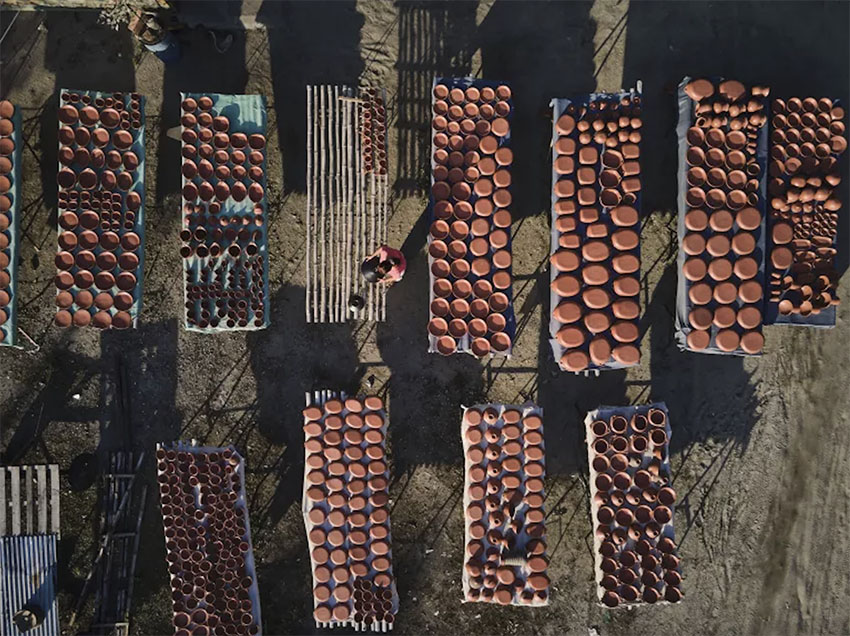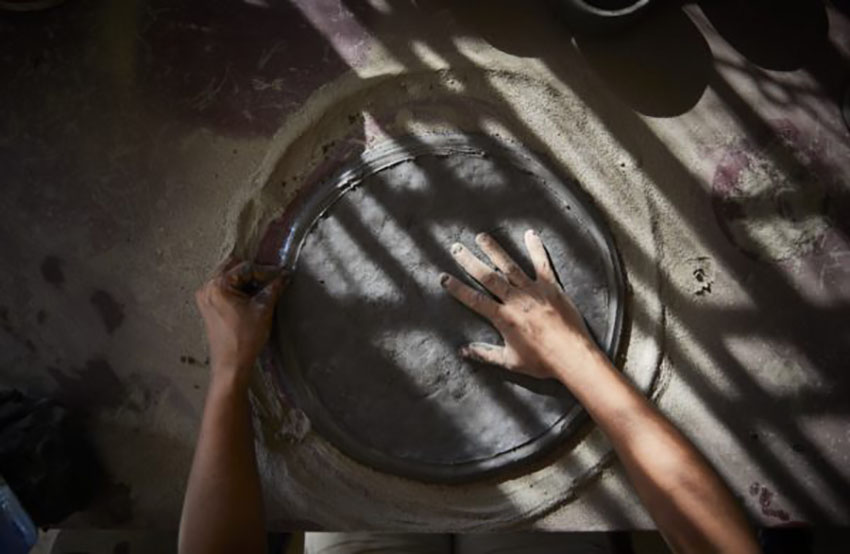Make
A bio material from Columbian craft culture | Studioilse x Ames

From our long-term collaborators Studioilse, founded by Ilse Crawford, we share the marvel of La Chamba, made from volcanic clay with a process that dates back centuries. Materially irresistible, the subtleties of the surface sheen and texture invite the touch of hand, and treated in a traditional way, make this new collection of Raiz lighting durable yet ultimately biodegradable.

At Christopher Farr, we are fascinated by heritage craft skills and the culture that exists around them, the knowledge passed down from generation to generation. In this case, from grandmother to grandchild, the traditional cooking pots made in La Chamba, which have become the Columbian vernacular, are made by women. Always interested in protecting and future proofing craft communities, we were drawn to this project as its aims are to bring Colombian craft together with design to keep it alive, and find new applications.

‘Design important role to encourage healthy systems, to provide employment, preserve skills and make them more accessible to a wider and different audiences. It what has what has motivated us here. These materials and skills and the objects produced have a soul and poetry that is very particular to Columbia.’ Ilse Crawford
Ilse first visited Columbia twenty years ago, with her husband and co-principal at Studioilse, Oscar Peña. Together they homed in on the recognised and readily available materials of the region – Iraca, the palm typically made into hats, and the clay from the La Chamba region.

The vernacular handmade cooking pots are made exclusively by artisans and craftspeople in the Colombian village of La Chamba on the banks of the Magdalena River. They are non-toxic.
The starting point is a mix of local sandy volcanic clay which is dried in the sun. It is then crushed and made into a dough which is kneaded by hand.


The clay is formed on a mold, then dried in the sun again, then sealed with a special red clay glaze, carefully applied on three layers, and then hand burnished with small agate stones.
Once fully dried in the sun, they are fired on-site in large kilns to just 700C degrees (considerably lower that ceramic which fires at 1200c), making them biodegradable. Next step is the smoking with organic material (either purified donkey dung, or rice husks) which gives them their distinctive satin black colour.

In 1972, La Chamba technical training centre was opened to teach young people the pottery trade. Today, just over 85% of La Chamba’s population, of all ages, is dedicated to making this type of pottery.
Studioilse x Ames, Raiz lighting collection is available in table top, floor standing and pendants in two sizes.

